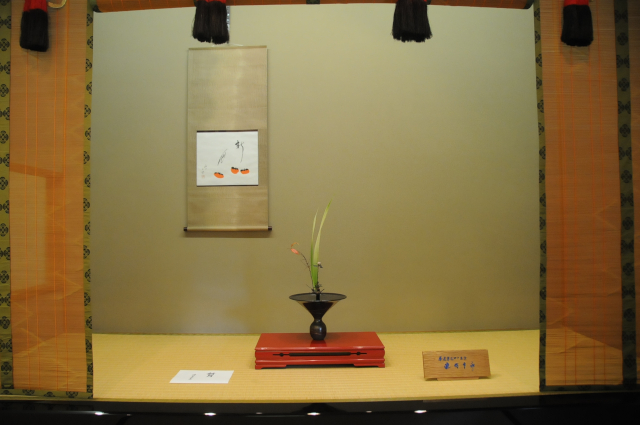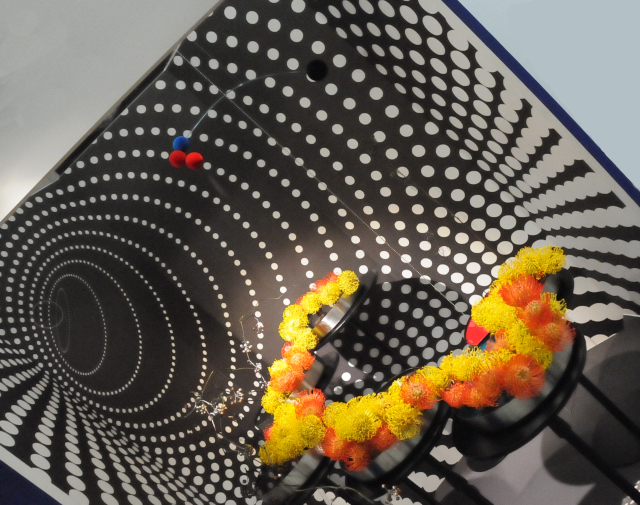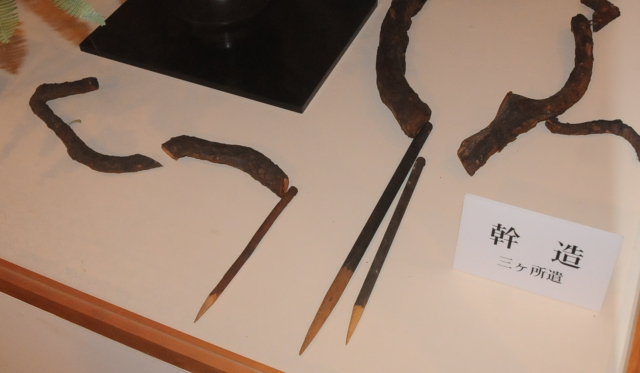Happy New Year of the Snake!
I wish you all the best: happiness, health, and success!

A European's move towards Japan
Happy New Year of the Snake!
I wish you all the best: happiness, health, and success!


Keigo Higashino
On a typical evening in Tokyo, a man staggers onto Nihonbashi Bridge and collapses in front of a policeman. However, he isn’t just drunk, he had been stabbed to death. Not long afterwards, a young man called Yashima is hit by a car nearby. In his possession he has the wallet of the dead man on the bridge.
When eventually a connection between the two men is found and Yashima dies from his injuries, the police close the case. But inspector Kaga is not so easily satisfied, and when he digs deeper into the murder victim’s life, the unearths a motive tied to the man’s strong belief in justice and taking responsibility.
An enjoyable read about two good men who have to pay the ultimate price – one for sticking to his principles and the other for letting go of them in a moment of weakness. Even though I felt that the mystery element wasn’t as strong as what I have come to expect from Higashino, I liked that there was a larger team involved in the investigation. This is closer to reality than the usual lone wolf detective of fiction.
Keigo Higashino, born 1958 in Osaka, started writing while still working as an engineer for a Japanese automotive company. His first novel won the prestigious Edogawa Rampo Award for crime fiction, which led him to become a professional author. Since then, he has written more than 65 novels and 20 short story collections, many of which have won awards or have been turned into films or TV series. About 20 of his books have been translated into English.
At the end of this book, there is an unexpected moral lesson that is timeless and transcends the boundaries of culture and language. Find out what it is and get the book on amazon.
While I was complaining last week about the cold weather, the temperatures plummeted even further, way below what’s normal around this time of the year. And I promptly got sick. I spent the weekend in bed with Pumpkin, but when I almost didn’t make it back upstairs after going to the toilet on Sunday night, I decided to get up again if just for a few hours on Monday.
Maybe it’s a flu, maybe another run-in with Corona, in any case I’m still having dizzy spells at times. This might also be because I don’t really feel like eating much, even though a friend of mine was kind enough to buy sweets and other easily digestible (and preparable) foods for me.
Anyway, I’ll be lying low for a while and this too will pass. And since it’s very close to Christmas and my usual holidays around this time of the year, I thought I’d just bow out a bit early – Sunday post is already prepared.
Take good care of yourselves, enjoy the holidays…. I’ll see you next year.
The autumn colours are over, and the temperatures dropped accordingly. In turn, Pumpkin and I are cold even indoors – I’ve mentioned the lack of insulation before, I believe…
So, time for my usual preparations for the cold: Once again, I’ve moved my bedroom to the smallest room on the second floor, facing south. My thick woollen duvet is in place, as well as the fleece blanket on top of it. Pumpkin may now sleep with me, not that he needs permission, really. It’s not freezing at the moment – we’ll keep those moments for February – so he’s in and out of my bed throughout the night. As long as he doesn’t wake me up doing so, I don’t mind.
There are also a few new things I have done this year to try and keep the house (and me) warm: First of all, I shut off the ventilator in my bedroom and nailed a board over the opening. Since I’ve moved in here, I never once used it, so I felt confident in my decision. There’s not much insulation in the hole that’s left, but I mainly boarded this up to decrease draught. With a bit of luck, this also prevents certain crawlies from coming inside…
Second, I asked for help from a neighbour’s contractor to put up a curtain rod in my genkan. There is now a heavy curtain in front of the entrance to the rest of the house, and I keep it closed in the nights. To be perfectly honest, neither of these improvements will make much of a difference with respect to the actual temperature in the house. Nevertheless, there is something to be said for the placebo effect, and that alone might just do the trick. 😉
However, one third thing that already made a difference in the nights: A friend of mine gave me an old hot carpet as a gift. Since I don’t use my living room much, not in winter, anyway, and I’m not sure whether it would withstand my heavy office chair, I came up with another use for it. It now lays between the two futon I use in my small bedroom.
It takes about 30 to 45 minutes to heat up the bed nicely, and my pyjamas to boot. Once I’m going to bed, I turn the carpet off again; I don’t mind the rest of the room being cold as long as I feel warm myself. I might need the heater still, but only to warm my hands when reading before I turn in. We’ll see how this goes in the long run, and how expensive this will be. For now, I’m very happy with the arrangement, and Pumpkin is too.
Christmas is not a big deal here in Japan, for obvious reasons. Even though many couples get married in a (fake) Christian ceremony with all the related trappings, the number of actual Christians in Japan is very small.
Thus, Christmas is more of a commercial thing, where people exchange gifts and friends go out together. Naturally, there is Christmas food, KFC chicken and strawberry cake, both of which feels super weird to me. To be fair, more and more Christmas-related sweets are for sale every year. I even saw chocolate Santas (aka: Nikolaus) from Europe in a popular shop selling foreign foods.

Until I get an oven and can bake my own Christmas cookies, this is the kind of fare I’ll have to make do with. And advent tea, of course. My friend from Tokyo has once again sent me an advent calendar filled with a surprise selection of tea. Today’s flavour was “Santa’s Secret”, a perfect fit to my chocolate and the strawberry cake I had for breakfast. Happy advent indeed!
Fuminori Nakamura
The Thief is an experienced pickpocket with hunting grounds all over Tokyo. He has honed his craft since childhood and over the years has even developed his own professional ethics: Target only wealthy people, only take the cash (and the occasional watch), drop the wallet into a mailbox after the deed.
His easy-going life is interrupted when his first partner in crime offers him a job: Simply tie up an old man and empty his safe. The Thief reluctantly agrees, and his instincts prove correct when he learns that after he had left the house, the man – a prominent politician – was brutally murdered. Now, the Thief is forced to leave Tokyo, but the person behind the murder may not be shaken off that easily.
This was an enjoyable, fast-paced read, and the unnamed Thief was easy to root for, thanks to his self-imposed moral code and his attempt to keep a poor boy from the neighborhood from following in his footsteps. As an interesting aside, the author poses the question of fate, essentially: “is our fate controlled by something outside of us, or is it our fate to be thus controlled?” While the story itself is quite straightforward, these are the questions that will keep you thinking for a while.
Fuminori Nakamura (a pseudonym) was born in 1977 in Aichi Prefecture and graduated from Fukushima University (Applied Sociology) in 2000. In 2002, his first novel won the Noma Literary Newcomer Award. Since then, he has won numerous prestigious awards for his writing – The Thief earned him the Oe Prize for example – and a number of his books were translated into other languages. Nakamura now lives in Tokyo.
The Thief was his first novel to be translated into English. However, its fairly straightforward style makes the original popular among Japanese students. Whatever language you prefer, the book is available on amazon.
There is something in the air around this time of the year that brings out the child in me – and I’m not even religious. I love Japan, but when Christmas approaches, a certain nostalgia sets in, and I miss things that I took for granted back home in Austria. The two things I miss most are: snow (I should’ve moved to Hokkaido) and baking cookies. And possibly central heating too (I should’ve moved to Hokkaido).
At least I have an advent calendar, the refillable one I bought two years ago is still going strong. However, there was a small problem with it: the little drawers on the sides didn’t close properly. This may sound petty, but I’m just OCD enough to find this annoying, so I fixed it by glueing little pieces of wood on which the drawers can rest onto the back of the calendar.

It didn’t take long, and now I’m ready to get the drawers filled again. And, as I’ve done before, while there will be chocolate and tiny sweets, some of the drawers will hold things to do like “have a bath” or “go for a walk” etc. It’s nice to create your own traditions for holidays.
On Friday, I went to this year’s Autumn Tanabata Exhibition of the Ikenobo school for ikebana flower arranging. This is the oldest annual exhibition of ikebana; it dates back to the Edo period and has been ongoing ever since. I have written about the history of ikebana and the Ikenobo school when I went to the spring exhibition in 2022, so I will not go into details again here.

This year, I had as a guide a friend of mine who works at the Ikenobo to show me through the exhibition and explain more of the art behind ikebana and what to look for in an arrangement. Here are a few details of what she told me.
Rikka is the oldest, most traditional style of flower arrangement and the most heavily formalized. It originated in the Muromachi era and was meant for large-scale arrangements in temples and the homes of nobles and samurai – essentially to show off their wealth and influence.

In Rikka, the goal is to create a whole landscape with a wide variety of plants; the back and top of the arrangement signifies the landscape far off, the closer and lower parts the nature nearby. Rikka is easily recognized by the round bundle the stems of the plants form in the container.

Shoka was developed in the Edo period. These arrangements are often much smaller, since they were meant for the tokonoma in the rooms of the lower class people (albeit rich ones, think merchants etc.)
A Shoka arrangement uses at most three different types of plants, they form a single line segment in the container and are best viewed from the front of the row rather than the side. Shoka is considered the most dignified style, and ideally, the flowers used encompass the past, present, and future of the seasons.

Then there is Free Style, where essentially “anything goes”. These arrangements come in all sizes and often include non-natural materials as well. Looking through the photos I took, I find myself mostly drawn to these pieces, they are very individual and often outright whimsical. Yet, the flowers should still form the focal point of the arrangement.

The goal of any arrangement in any style is that it looks as natural as possible, even if artificial means are used. We’re talking about using wires to bend stiff materials, or hand creme to prevent the tips of leaves from drying out too quickly. Some arrangements are even planned out in advance, and tree branches are cut and put together to create specific angles to fit the design. All of this is fine – as long as the end result still looks natural.

When learning ikebana in the Ikenobo school, students start out with the Free Style before moving on to Shoka and finally, Rikka. My friend explained that soft materials are easiest to use, while a Rikka arrangement that only consists of pine branches, for example, marks the height of a student’s accomplishment.

With all this information, the exhibition was much more enjoyable than the previous time. I feel I know some details to look for, even though I cannot judge the actual artistic merit of an arrangement. So far, I’ve always thought that ikebana had very strict rules to create a piece, but when starting out in Free Style, this is not necessarily true. I’m thinking it might be nice to try ikebana, but it is a very expensive hobby indeed.
As some of you may already know, I’ve been doing something new this year: Last spring, I became a tour guide for (mostly) German speaking visitors to Kyoto.

That was a big step for me because I always thought this was not the kind of job I would enjoy. As an introvert who doesn’t warm easily to strangers, the sheer thought of spending hours with people I’ve just met – and generally having to be on my most charming behaviour to boot – simply scared me.
However, the reality surprised me. First of all, I get to talk for hours about my favourite subjects: Japanese culture and history. And second, people who book a guided tour are by and large curious and eager to hear what I have to say. So, I’d say, it’s a fun win-win for both sides, and the fact that I only do very small groups of max. 5 people does help.
Of course, there are drawbacks too. Although I enjoy the experience it can be quite draining because I’m still an introvert. Also, my arthritis doesn’t help with running around for hours, even though the amount of pain is not always the same. All this to say that usually, I’m pretty exhausted the day after a tour, both physically and mentally, and sometimes, I cannot do any demanding tasks at all on the next day.
Despite all this, the pros considerably outweigh the cons, and I have decided to continue with the tour guiding. Even more, I’m going to offer my own tours through What’s up in Kyoto starting next year.
For now, I’ve been working as a sub-sub-contractor for companies in Tokyo, who take roughly 30% of the fees. The money isn’t that bad, but at the end of the day, my hourly rate isn’t much more than what I get for an hour of English teaching (where I don’t have to move.)
Before setting everything up, however, I need to do some research on pricing and logistic details. I also want to offer more tailored tours for people who have seen the major tourist spots already and want to do something different. I have a few ideas already, mostly centered on the areas where I’ve lived before. Of course, I’ll keep you posted when everything is set up!